Visiting the butterflies at Pismo Beach Monarch Grove as they migrate is a wow moment you won’t likely forget. Here’s what you need to know to visit the butterflies in their winter habitat.
They swirl, flutter, and dance to the delight of the human eye. The monarch butterfly is in all its glory at the Monarch Grove in Pismo Beach each year from October through February. Here are a few highlights of my visit this season, so you can plan to enjoy your own wow moments with the butterflies at Pismo Beach.
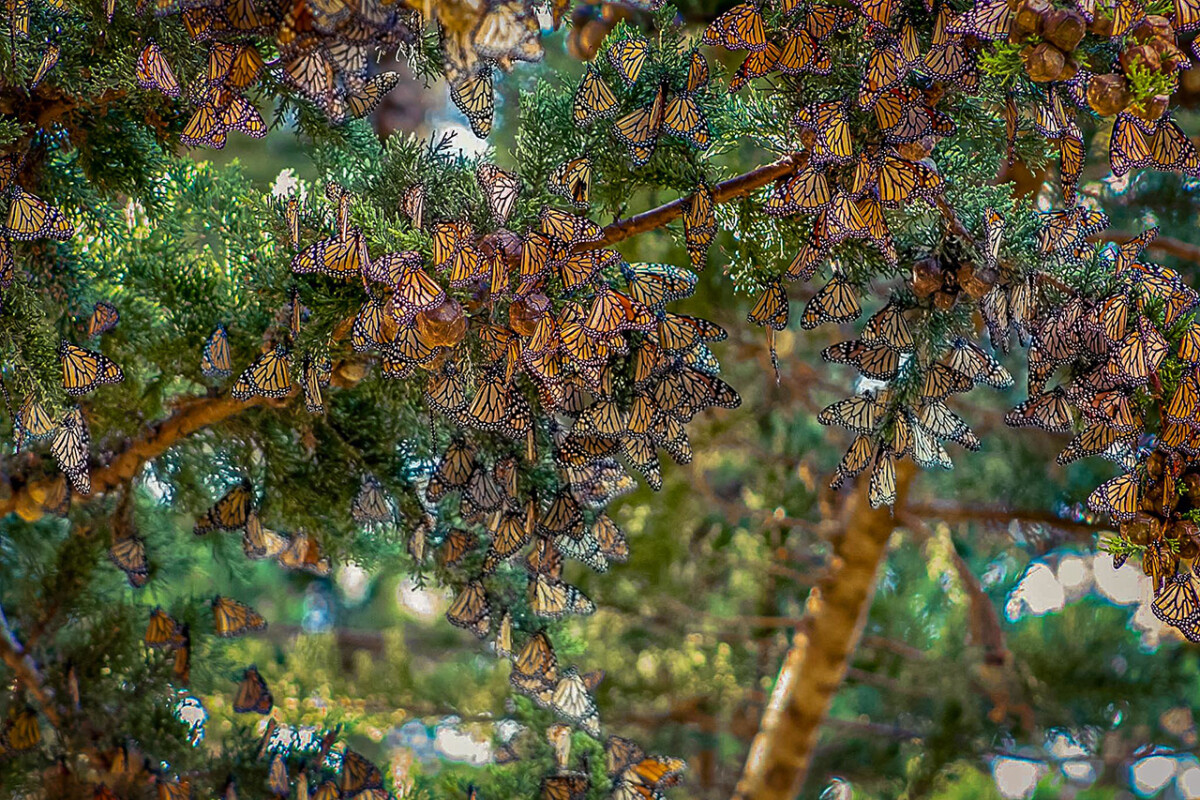
Monarch butterflies. Photo Courtesy of Highway 1 Discovery Route
Monarch Grove
The monarch butterfly migrates from the north to California to seek shelter from the cold and freezing weather. Five coastal sites in the state see well over 10,000 butterflies flapping their orange and black wings every year. Depending on the weather, hundreds of butterflies cluster in Eucalyptus trees. One site, Pismo State Beach Monarch Grove, represents one of the most popular sites to observe the butterfly’s winter haunt.
Visiting the Grove is one of those natural wonders that you should not miss. Whether you are a butterfly lover, nature buff, or just like to do something different, you will be wowed by the beauty of this winter habitat for butterflies.
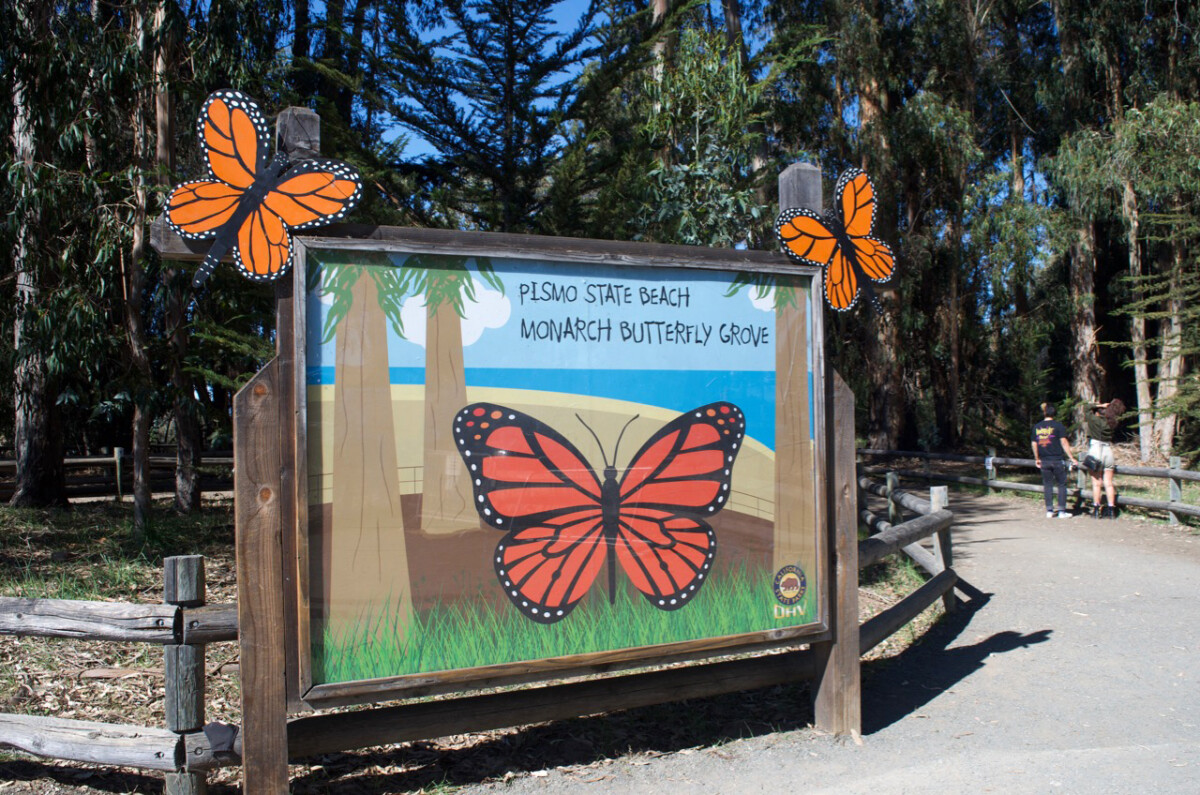
Pismo State Beach Monarch Grove. Photo By Cori Solomon
Monarch Butterflies
The monarch butterfly is also known as the Danaus Plexippus. Rumor has it that the monarch was named for King William III (England, Scotland, and Ireland’s monarch from 1689-1702) because he was the Prince of Orange.
- Discover wow moments with Sara Dykman as she journeys with the monarch butterflies
Prices pulled from the Amazon Product Advertising API on:
Product prices and availability are accurate as of the date/time indicated and are subject to change. Any price and availability information displayed on [relevant Amazon Site(s), as applicable] at the time of purchase will apply to the purchase of this product.
The monarch typically lives for 6 to 8 weeks. However, when they migrate from the north, their lifespan lasts from six to eight months. They are distinguished by their orange wings covered with black lines and white dots.
In the United States, there are two types of monarch butterflies—the eastern and western butterflies. The eastern monarch migrates from Canada to central Mexico, covering about 3,000 miles. The western monarch transverses along the Pacific Coast about 300 miles. It is thought that the western monarchs have smaller forewings due to the distance they fly during migration. Each year, the journey is always the same, especially since the butterflies cannot cross the Rockies or the Sierra Nevada Mountains because of the cold temperatures at high elevations.
The difference between the male and female monarch is that the males are slightly larger, have thinner wing veins, and have a black spot on their hindwing.

A male monarch butterfly. Photo Courtesy of Highway 1 Discover Route
The Monarch Life Cycle
There are four stages to the monarch butterfly’s life. It begins with the egg, lasting 4 to 6 days, moving on to the larvae or caterpillar, which lasts two to three weeks, followed by the pupa or chrysalis, a 5- to 15-day transformation stage, and finally, the adult butterfly. The latter lasts two to five weeks in the summer but can be six to eight months during winter.
While in the Monarch Grove, the butterflies mate as they get closer to spring. The males eventually die off. The female butterfly flies off to lay her eggs and begins the cycle again as the weather grows warmer. The females lay their eggs during spring and summer. The female can lay hundreds of eggs, depositing them in milkweed plants.
In the caterpillar stage, they avidly eat milkweed. Milkweed is poisonous to many birds and animals, but for the monarch, it strengthens and nourishes them. The poison remains, and as an adult butterfly, it provides protection. Most predatory birds avoid the butterflies due to the sickening and foul-tasting poison.
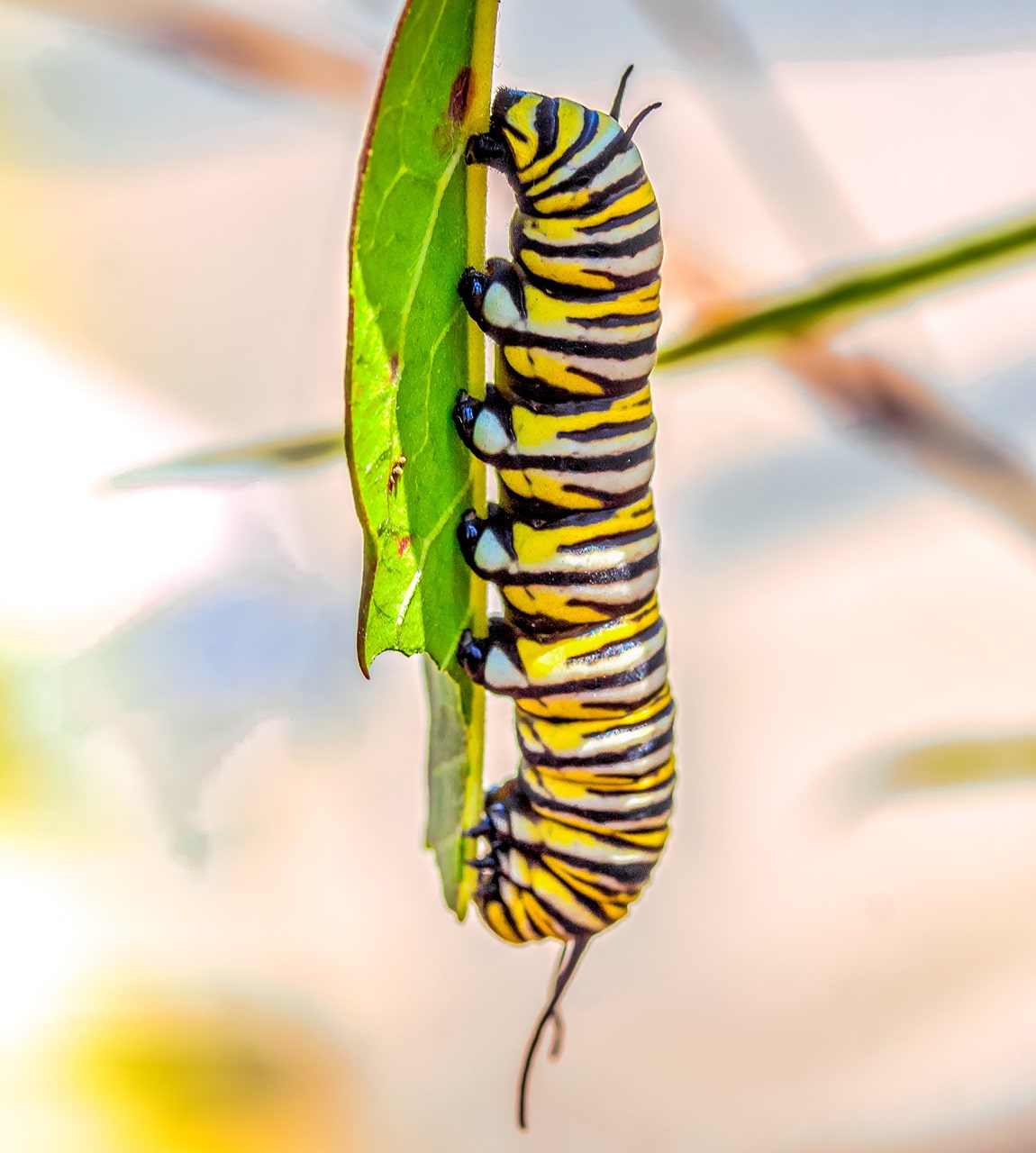
The caterpillar stage. Photo Courtesy of Highway 1 Discovery Route
Butterflies at Pismo State Beach Monarch Grove
Before seeing the butterflies at Pismo Beach, I wondered why the butterflies return each year to the same location. I discovered the answer is the debris they leave behind. Their waste is like a beacon attracting a new herd every year. It is this signal that delights all who visit the grove of eucalyptus in Pismo Beach. Everyone walks through the grove with their heads angled upward so as not to miss a flutter from above. The flicker of orange and black is everywhere, and you hope one will land so you can get a close-up view.
Often, the butterflies form dense clusters, with each one hanging with its wing down over the one below, creating a shingle effect. This formation provides shelter from the rain and warmth for the group. The weight of the cluster helps keep it from whipping in the wind and dislodging the butterflies.
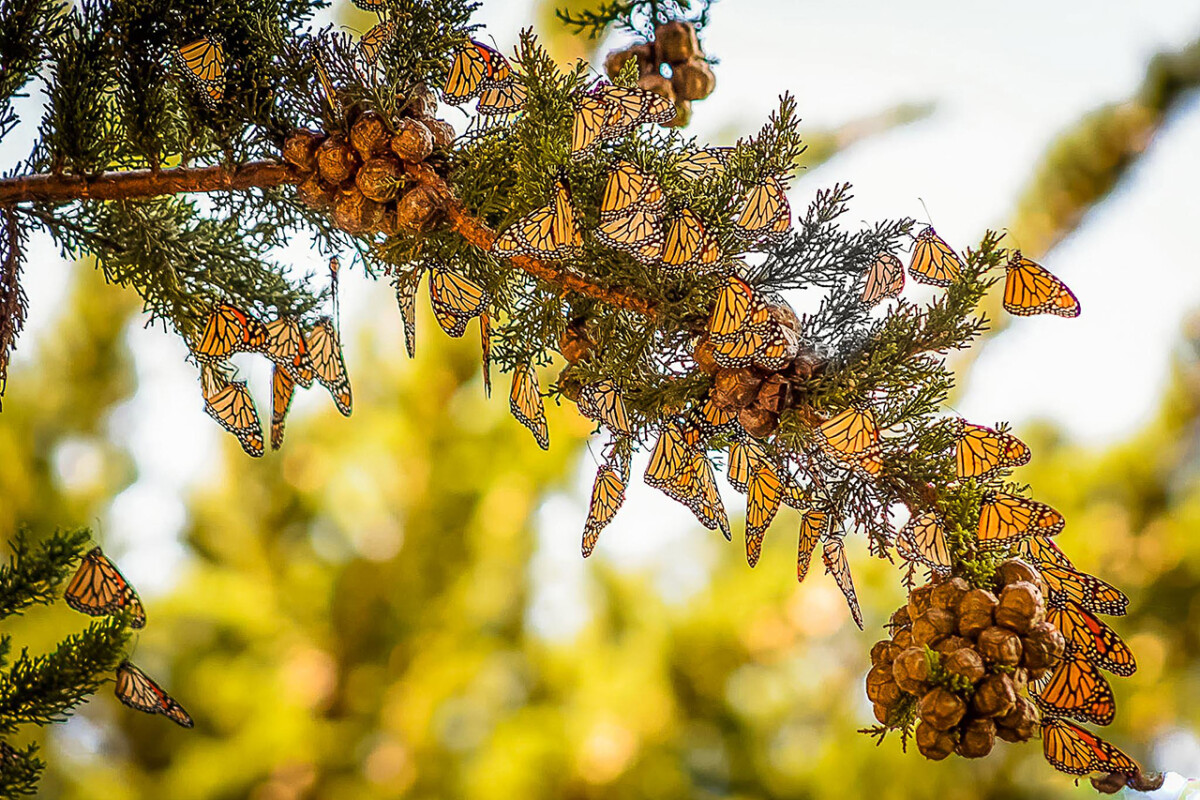
Monarch butterflies at Pismo Beach Monarch Grove. Photo Courtesy of Highway 1 Discovery Route
The quiet awe that permeates the grove draws you in as you seek out the show’s star, and then the monarch butterfly presents itself. Even a visiting cat is mesmerized by the movement of the wings above.

A visiting cat watching the butterflies at Pismo Beach. Photo by Cori Solomon
Take a Stroll to the Ocean
Adjacent to the Monarch Grove, there is a path called Meadow Creek Trail. It leads from the grove to the ocean. It is pleasant to stroll along the estuary to the ocean on a nice day. Glimpse wildflowers and wildlife along the way.

The serene coastline view along Meadow Creek Trail. Photo by Cori Solomon
What to Bring When You Visit Pismo Beach
When you plan your visit to the Monarch Grove, bring some binoculars.
- 【Powerful 12x42 Binoculars, but Lightweight Enough, only 1.1 pounds】 Adorrgon 12x42mm binoculars deliver 367ft/1000yds large field of view. Capable of delivering a clear face from more than 650 feet away. Perfect for bird watching, hunting, sports events.
Prices pulled from the Amazon Product Advertising API on:
Product prices and availability are accurate as of the date/time indicated and are subject to change. Any price and availability information displayed on [relevant Amazon Site(s), as applicable] at the time of purchase will apply to the purchase of this product.
If you go for photos, pack your telephoto lens because sometimes the butterflies are not within close-up range. They populate the upper branches of the eucalyptus trees.
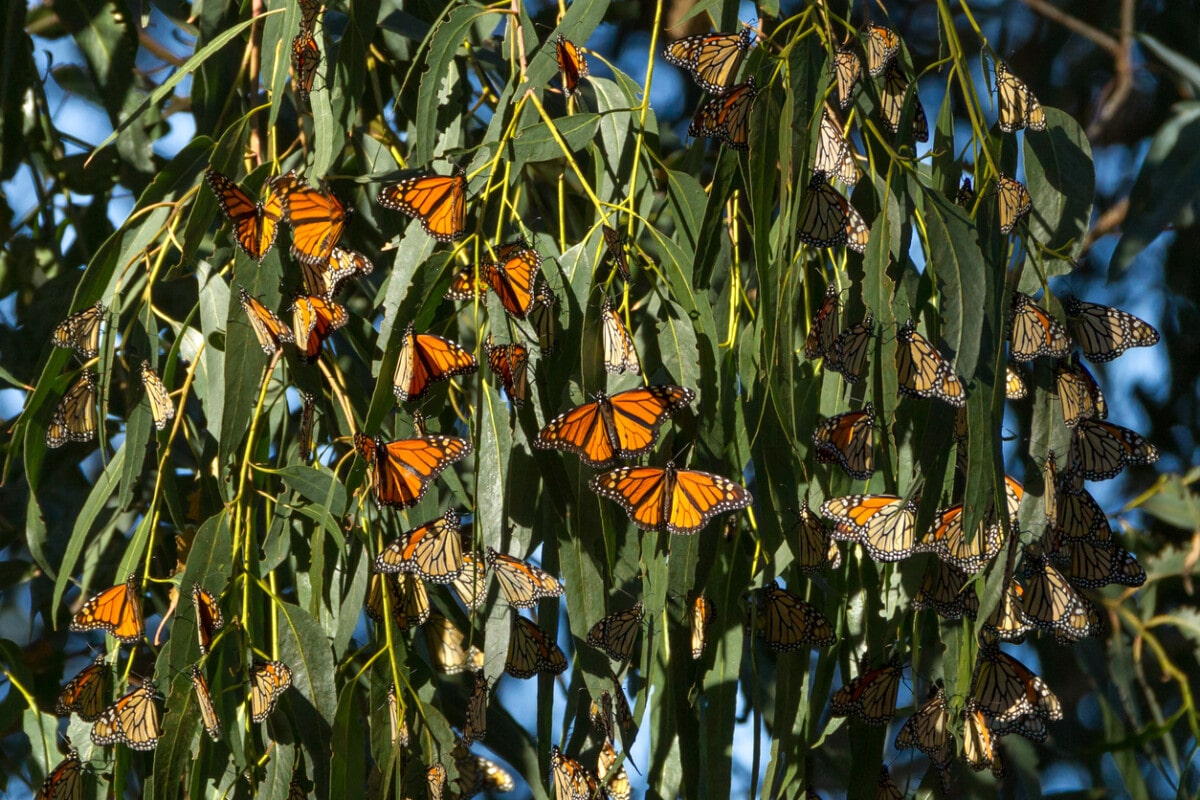
Monarch butterflies stay in the branches of the eucalyptus trees in Monarch Butterfly Grove at Pismo State Beach. Photo by S_Gibson via iStock by Getty Images
Monarch Grove Location
Pismo State Beach Monarch Grove is a half mile south of Pismo Beach, just off Highway 1. It is about 90 miles north of Santa Barbara and 20 minutes south of San Luis Obispo. The driveway south of the North Beach Campground at 400 S Dolliver St leads to the entrance. Street parking is easily accessible.
- Pismo Beach, California, Monarch Butterfly Grove, Contour Vinyl Die-Cut Sticker 1 to 3 inches (Waterproof Decal for Cars, Water Bottles, Laptops, Coolers), Small, Intended for permanent placement.
Prices pulled from the Amazon Product Advertising API on:
Product prices and availability are accurate as of the date/time indicated and are subject to change. Any price and availability information displayed on [relevant Amazon Site(s), as applicable] at the time of purchase will apply to the purchase of this product.
Articles Related to the Butterflies at Pismo Beach
- Butterfly Wonderland in Scottsdale
- Wandering Wine Country Festivals in Winter
- Art and Wineries in Paso Robles
- Pacifica on the California Coast
- Pacific Coast Highway
- Carmel-By-The-Sea
- Discover Central Coast Coffee and Tea at Dewlson Family Farm
When You Visit the Butterflies at Pismo Beach
It is easy to stand mesmerized as you watch the butterflies at Pismo Beach thrive in their winter home. The fluttering of wings and the dance of the golden monarchs on the breeze is definitely an unforgettable wow moment. Be sure to check out Wander for more to see and do as you explore California’s Central Coast towns.
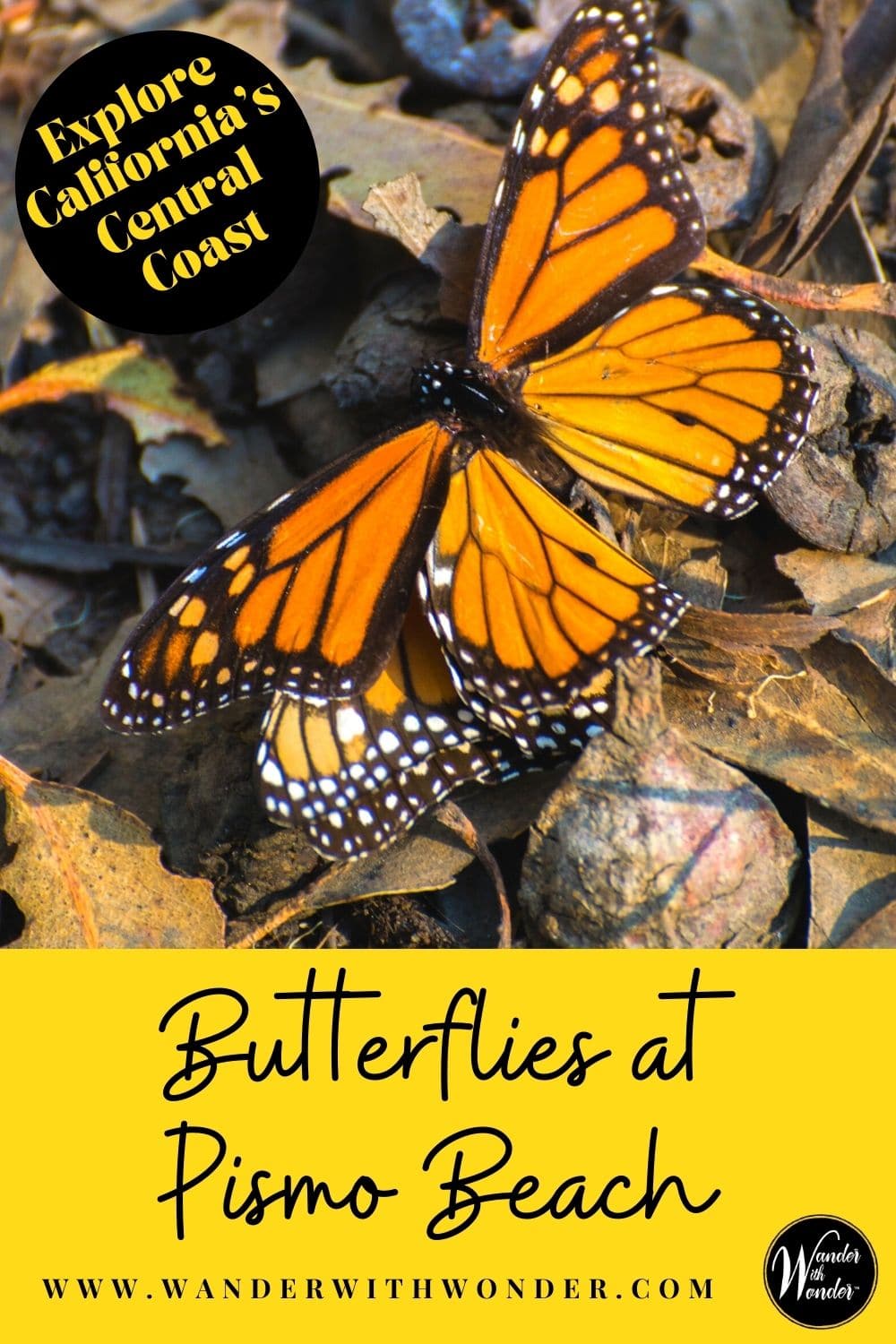









I would love to see that part of the monarch migration some day. Thanks for covering this improtant story.